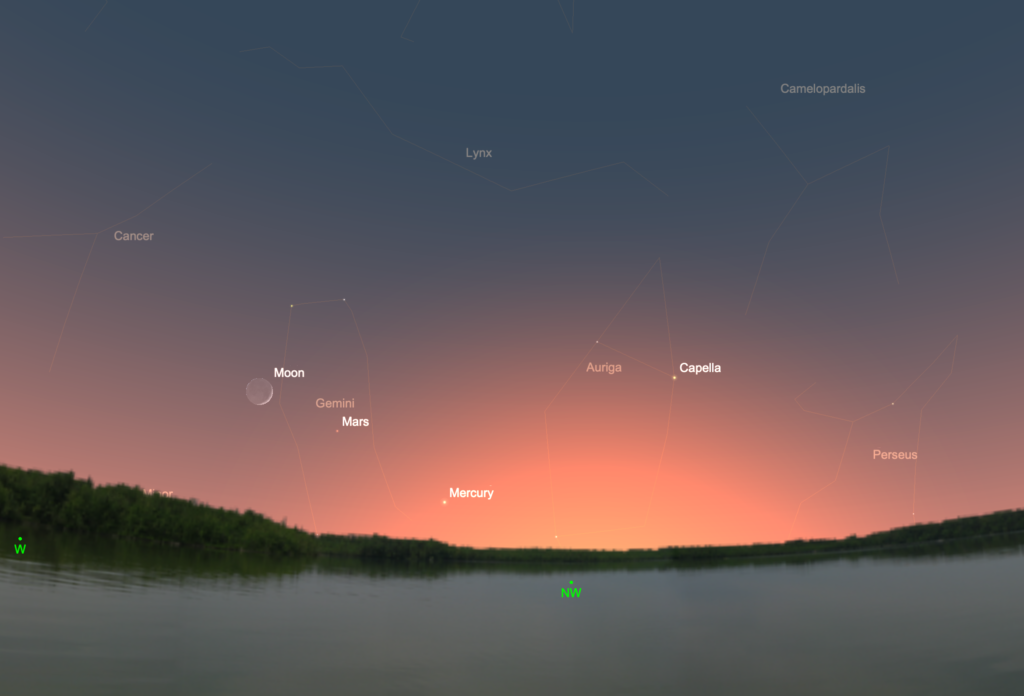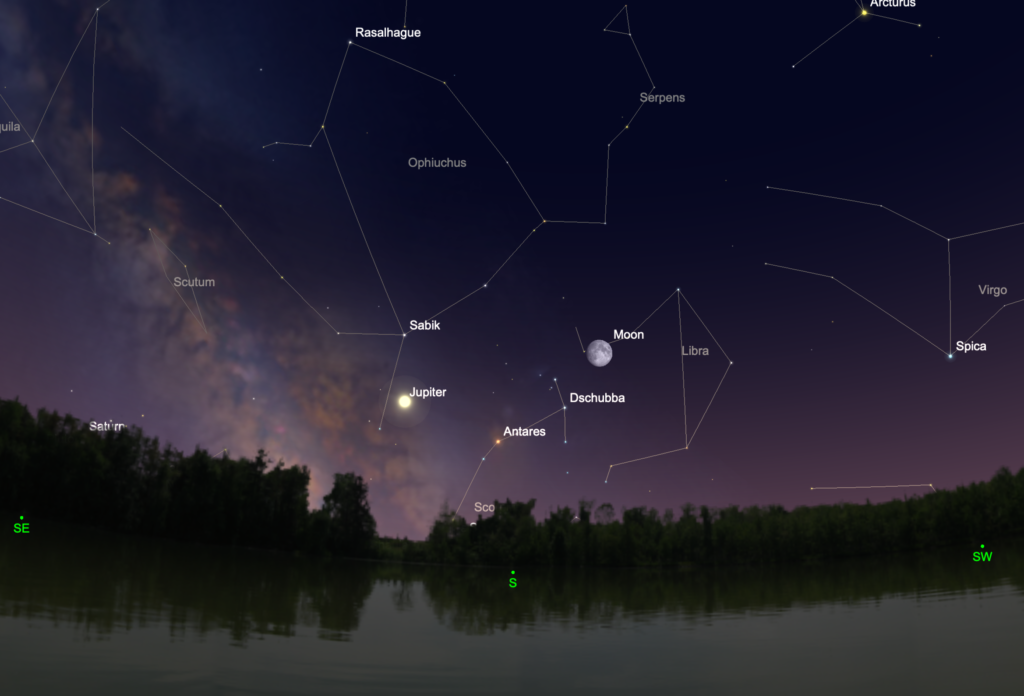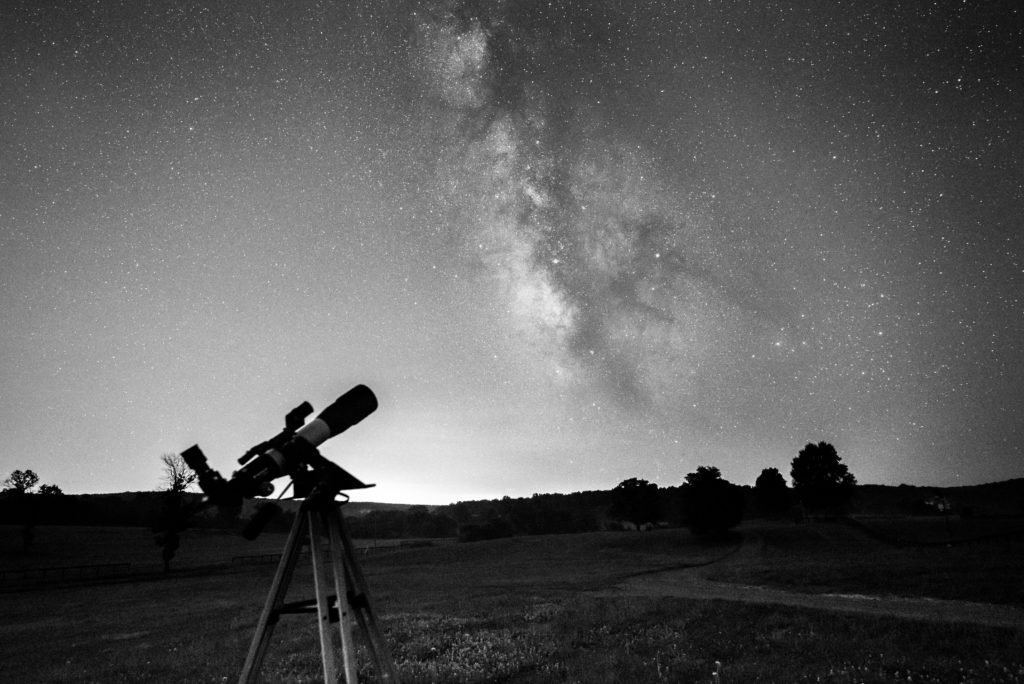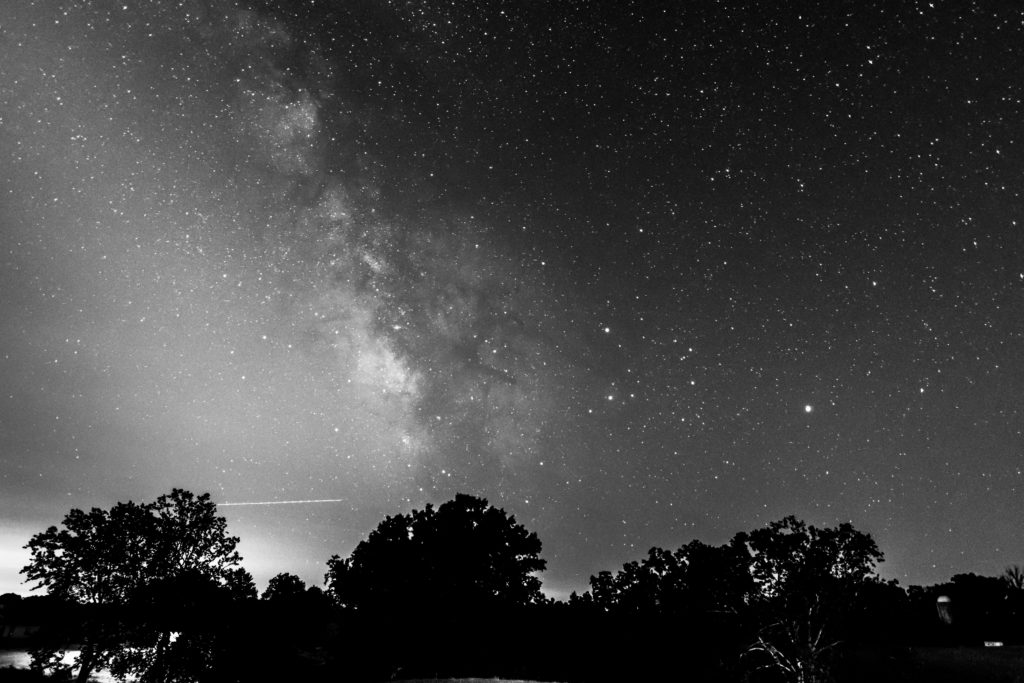June marks a time of turning in the night sky as the relatively star-poor constellations of the past few months give way to the rich star fields along the plane of the Milky Way. All five bright planets are visible in June with the Moon to guide the way. Jupiter reaches opposition and makes its closest approach to Earth this year, while the Sun reaches the June solstice marking a welcome change of seasons. Here’s what’s happening in the night sky this month…
31 May 2019. Today marks the 200th anniversary of the birth of Walt Whitman, the quintessentially American poet and the poet-laureate of stargazers everywhere on account of his two short poems on the experience of contemplating the night sky…
1 June. The last vestiges of a waning crescent Moon linger in the east-northeast along with the planet Venus just before sunrise. If you have a clear view of the horizon in this direction, look for them in a pair of binoculars. They never fail to disappoint.
3 June. New Moon, 10:02 UT.
5 June. Look low over the west-northwestern horizon after sunset with binoculars and try to spot the wafer-thin crescent Moon, the planet Mercury, and the planet Mars arranged in a 17o-long diagonal. A beautiful sight!

6 June. Today the waxing crescent Moon is just two finger-widths (about 4º) to the west of the Beehive star cluster (Messier 44) in the constellation Cancer in the western sky after sunset. Yet another opportunity for pleasant viewing with a pair of binoculars.
10 June. First Quarter Moon, 05:59 UT
10 June. The planet Jupiter reaches opposition, rising in the east as the Sun sets in the west. This marks the closest approach of Jupiter to Earth this year. The big planet lies along the southern reaches of the ecliptic in the constellation Ophiuchus. This makes it challenging for northern-hemisphere observers because the planet is low over the horizon and obscured by a thicker layer of atmosphere. Southern observers will get a better view, since the planet is nearly overhead from Australia, New Zealand, and South Africa. There’s always plenty to see on the face of Jupiter in a telescope, and even binoculars reveal the constant Newtonian dance of the planet’s four largest Moons. This month, Jupiter shines at a brilliant magnitude -2.6, far brighter than any star, and spans an apparent angular diameter of about 46”.
Learn more about how to see this beautiful planet in our 2019 guide to observing Jupiter.
15 June. The waxing gibbous Moon, brilliant Jupiter, and the red-orange star Antares form a small triangle over the southern horizon all night (nearly overhead for southern-hemisphere observers).

17 June. Full Moon, 08;31 UT
17 June. Back to Mars and Mercury again! Look to the northwest after sunset, just over the horizon, to see the two planets just half a degree apart. Mercury, at magnitude +0.1 this evening, is noticeably brighter than Mars which shines at magnitude +1.8. Again, binoculars will help with this observation. Over the next several nights, the planets slowly separate but remain an intriguing (if challenging) sight!
18 June. Look eastward about 10-11 p.m. (your local time) to see Saturn and the nearly-full Moon rising together just a degree apart. The ringed planet continues to grow larger and brighter this month on the way to opposition on July 9. The planet rises about an hour after sunset in mid-month. It shines at magnitude +0.1 just above and east of the Teapot of the constellation Sagittarius. Like Jupiter, the planet is far south along the ecliptic and presents a challenge this year to northern observers but a delight to deep-southern observers who will see the planet nearly overhead.
21 June. At 15:54 UT, the Sun reaches its most northerly point on the ecliptic and appears to ‘stand still’ at the June solstice. This marks the beginning of summer in the northern hemisphere and winter in the southern hemisphere, as well as the longest and shortest days of the year, respectively.

25 June. Last Quarter Moon, 09:46 UT
30 June. If you’re out late or up early, look to the east before dawn to see the waning crescent Moon rising among the stars of the Hyades and the Pleiades, the two large stars clusters that comprise the constellation Taurus. These stars are usually associated with northern winter or southern summer, so it’s always a jolt to the senses to get a preview of this constellation at this time of year!
